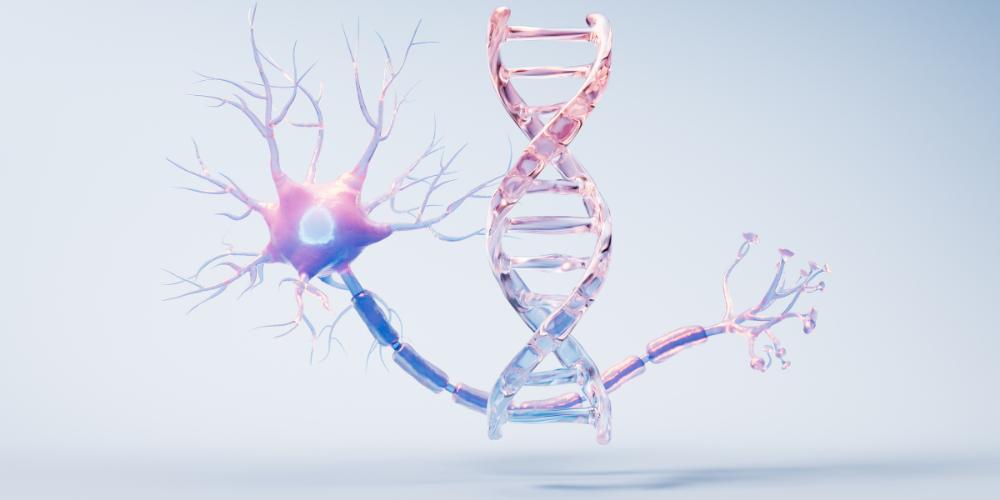Drug Delivery to the Brain: Engineering Precision Across Novel Modalities
Delivering therapeutics into the brain remains one of the greatest challenges in tackling neurodegenerative disease. Modern drug modalities demand delivery systems engineered with precision, safety, and modality-specific requirements in mind.

Neurodegenerative diseases such as Alzheimer’s disease (AD), Parkinson’s disease (PD), motor neuron disease (MND, including amyotrophic lateral sclerosis, (ALS)), and frontotemporal dementia (FTD) remain areas with limited disease-modifying treatments. Therapeutic pipelines in this area are increasingly dominated by antisense oligonucleotides (ASOs), RNA interference (RNAi) molecules, monoclonal antibodies, and viral gene therapies such as adeno-associated virus (AAV). These modalities offer the potential to modulate genetic pathways, reduce toxic proteins, or deliver genes to modulate disease pathways.
However, the size, structure, and physicochemical properties of these modalities largely prevent them from crossing the blood–brain barrier (BBB) through systemic delivery routes. The brain’s protective architecture restricts where and how these molecules can be delivered, and their complexity introduces delivery demands that conventional administration cannot meet.
Drug development must therefore evolve in parallel with delivery system design.
Once a modality is defined, the delivery strategy and device architecture required to administer it safely, precisely and effectively must be developed alongside it.
Why New Modalities Require Bespoke Approach to Delivery
Many of the emerging central nervous system (CNS) modalities have delivery requirements that differ fundamentally from traditional therapeutics. ASOs and RNAi therapeutics, for example, require broad CNS exposure and are therefore commonly administered into the cerebrospinal fluid (CSF) rather than via more localized, parenchymal approaches. CSF flow is largely pulsatile and oscillatory, with a slow net movement along the spine. After lumbar intrathecal administration, for example, these transport dynamics together with limited diffusion and tissue uptake, usually cause the drug to stay concentrated near the injection site and to decrease progressively as it travels upward towards the brain. Because these molecules are highly charged and diffuse slowly, such gradients persist, limiting penetration into deep structures without controlled flow. Device requirements should therefore include precise catheter placement, controlled infusion, prevention of local pooling, and repeat dosing capability.
In contrast, large proteins such as monoclonal antibodies must reach cortical, subcortical, or deep-brain regions, necessitating intracerebroventricular or intraparenchymal delivery. Devices must incorporate many elements to ensure targeted delivery such as reflux-resistant geometries, strategies for targeted spatial coverage, controlled infusion profiles, and low-adsorption materials to prevent protein aggregation.
Viral gene therapies impose some of the strictest demands on delivery systems. AAV vectors are sensitive to shear forces, turbulence, surface adsorption, and pressure changes, and maintaining capsid integrity throughout preparation and infusion is critical. Delivery systems must include ultra-smooth internal surfaces, gentle and stable low flow rates, inert materials, and high-precision targeting of deep structures.
In these cases, the delivery device becomes an integral component of the therapeutic product.
Device Engineering as a Core Component of Drug Development
When delivery impacts therapeutic efficacy, the device effectively becomes part of the therapy. The mechanical, geometric, and material requirements of a delivery system must therefore be defined not only by clinical considerations, but by the physical and biological behavior of the therapeutic agent and the tissue it enters. In the CNS, this means accounting for the poroelastic nature of brain tissue, how it deforms, absorbs, dissipates, and redistributes fluid under pressure. These properties vary markedly between grey and white matter, differ across deep nuclei and cortical layers, and evolve dynamically as disease alters cellular composition, extracellular matrix structure, and hydraulic resistance. Such heterogeneity means that a device designed for one anatomical context may not perform predictably in another, even at identical infusion parameters.
Because these biological factors directly shape how infusate spreads, engineers must design delivery systems around the interplay between modality constraints and tissue mechanics. This shifts the focus from simply handling the molecule to engineering the conditions under which it travels. Cannula-based systems, for example, are one way of addressing this focus and key decisions include selecting tip geometries that balance mechanical stability with minimal insertion trauma; choosing port architectures that control local flow vectors and prevent jetting or backflow; and tuning lumen dimensions and surface properties to reduce adsorption, shear-induced degradation, or clogging under clinically relevant conditions. Each of these choices dictates how the therapeutic is introduced into the tissue microenvironment and how reliably it follows intended distribution pathways.
Beyond the insertion device itself, infusion strategy becomes a critical engineering parameter in its own right. Flow rate, pressure control, and infusion timing must be optimised to avoid exceeding the tissue’s capacity to deform safely, a threshold that varies with pathology, age, and regional structure. In some contexts, a constant-pressure approach stabilises the infusion front, while in others, constant-flow allows more predictable volumetric spread. Incorporating features such as pressure-relief paths, multiport configurations, or dynamic flow modulation can further tailor distribution when a single port or monotonous flow profile is insufficient. The device, in other words, does not merely deliver the therapy, it shapes how the therapy propagates through complex biological substrates.
Thus, the therapeutic modality defines the device’s safe and effective operating window, from acceptable flow ranges to port geometry and infusion timing.
Integrating these constraints into device architecture is what converts a therapeutic concept into a deliverable intervention, shaping dosing, distribution, and clinical performance. This perspective anchors the subsequent design decisions and highlights why device engineering must evolve in parallel with emerging therapeutic modalities.
Research and Modeling: Validating Drug–Device Interaction
Ensuring a therapy reaches the right place (and not off-target), in the right amount, requires evidence. That evidence comes from a spectrum of approaches. In-silico modelling is often the first step, using first-principles physics, computational fluid dynamics, or finite-element methods to explore how a device, a therapeutic, and the brain’s microstructure interact. These models account for tissue porosity, elasticity, white–grey matter boundaries, fluids viscosity and dynamics, and pressure gradients to forecast how an infusion will spread before a single experiment is run.
But simulations are only as good as the worlds we build for them. Brain-mimicking hydrogels and 3D-printed phantoms provide physical testbeds where model-based predictions are challenged and refined. They make flow visible, enable rapid parameter testing, and allow researchers to probe failure modes without the constraints of animal work. These platforms narrow uncertainty and help translate computational insights into practical infusion parameters, helping guide device design.
Animal studies deliver the critical translational step, revealing how elements such as distribution, tissue response, device–tissue mechanics, and (for gene therapies) transgene expression play out in vivo. Here, the goal is not just to confirm spread, but to understand how biology responds to the physical act of delivery, a dimension no model or phantom can fully capture.
Together, these stages form an iterative design–test–refine loop, which is essential for reliable, modality-specific CNS delivery.
Collaborative Expertise and Scientific Frameworks
Because device-based delivery is integral to being able to achieve therapeutic effect of these modalities, progress depends on teams that can bridge biology, engineering, modelling, and clinical practice. Each discipline contributes a different piece: drug discovery teams define the therapeutic goal and target exposure; engineers translate those needs into device and flow-system architectures; modellers anticipate how an infusion will behave in complex tissue or fluid; neurosurgeons test procedural feasibility and targeting; imaging specialists verify where the therapy actually goes; and human factors experts ensure the device can be used safely and reliably in real clinical settings. Innovation emerges at the intersections of these disciplines, where insights are shared and refined.
To support this, many organizations draw on multidisciplinary scientific advisory boards (SABs) that span neurodegeneration, biomaterials, computational modelling, device engineering, neurosurgery, and regulatory science.
These boards provide an early-warning system for delivery challenges, shaping designs and validation strategies and ensuring that device performance stays aligned with biological and clinical requirements.
Complementing this are pre-competitive collaborations, modelling consortia, shared phantom libraries, device-testing networks, and harmonised imaging datasets, that give teams a common scientific language. These shared resources reduce duplication, improve reliability, and accelerate the path from concept to clinically deployable delivery systems.
Conclusion
Novel modalities, including ASOs, RNAi agents, antibodies, and viral gene therapies, represent the leading edge of neurodegenerative therapeutic innovation. But realising their full potential depends on delivery systems that are precise, reliable, and tailored to each modality’s unique demands.
Device design and engineering must therefore advance in parallel with drug development, supported by rigorous modelling, interdisciplinary expertise, and integrated scientific frameworks. By uniting therapeutic design with delivery system innovation, the field is laying the groundwork for meaningful progress in neurodegenerative diseases and accelerating the pace of CNS therapeutic innovation.
References
Yang HM. Overcoming the Blood-Brain Barrier: Advanced Strategies in Targeted Drug Delivery for Neurodegenerative Diseases. Pharmaceutics. 2025 Aug 11;17(8):1041. doi: 10.3390/pharmaceutics17081041. PMID: 40871062; PMCID: PMC12388969.
Gao J, Gunasekar S, Xia ZJ, Shalin K, Jiang C, Chen H, Lee D, Lee S, Pisal ND, Luo JN, Griciuc A, Karp JM, Tanzi R, Joshi N. Gene therapy for CNS disorders: modalities, delivery and translational challenges. Nat Rev Neurosci. 2024 Aug;25(8):553-572. doi: 10.1038/s41583-024-00829-7. Epub 2024 Jun 19. PMID: 38898231.
Wu, D., Chen, Q., Chen, X. et al. The blood–brain barrier: Structure, regulation and drug delivery. Sig Transduct Target Ther 8, 217 (2023). https://doi.org/10.1038/s41392-023-01481-w
Hunt MA, Hunt SAC, Edinger K, Steinauer J, Yaksh TL. Refinement of intrathecal catheter design to enhance neuraxial distribution. J Neurosci Methods. 2024 Feb;402:110006. doi: 10.1016/j.jneumeth.2023.110006. Epub 2023 Nov 13. PMID: 37967672.
Yuan T, Zhan W, Terzano M, Holzapfel GA, Dini D. A comprehensive review on modeling aspects of infusion-based drug delivery in the brain. Acta Biomaterialia. 2024 Sep 1;185:1-23.
Lonser RR, Sarntinoranont M, Morrison PF, Oldfield EH. Convection-enhanced delivery to the central nervous system. J Neurosurg. 2015 Mar;122(3):697-706. doi: 10.3171/2014.10.JNS14229. Epub 2014 Nov 14. PMID: 25397365.










